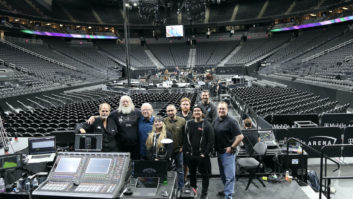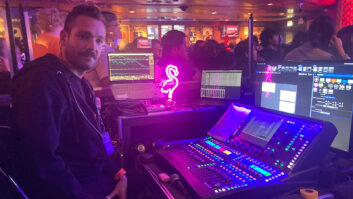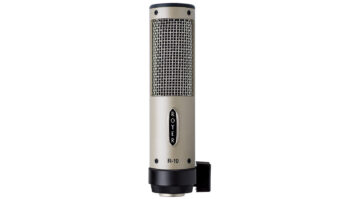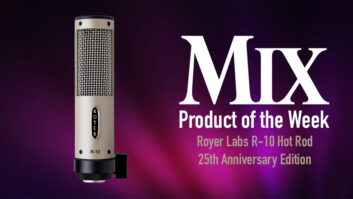George Olson serves as the lead audio technician and FOH engineer for George Strait. Working through Onstage Systems of Dallas, TX (the company that handles Strait’s tour logistics), Olson has been a mix engineer for over 30 years. In addition to his work with George Strait, he also serves as monitor engineer for country artist Lee Ann Womack. With a pedigree of this stature, Olson certainly knows how to deliver quality sound. He discussed his preference for Royer ribbons.
“At the end of the day, it all boils down to the quality of the sound,” Olson explained, “and for me, this is what makes Royer Labs’ ribbon microphones so appealing. Prior to using the Royer mics, I found myself spending way too much time and effort EQing the input signals and still not being happy with the accuracy of the sound those other microphones delivered. I had heard a lot of positive commentary about the Royer mics, so I decided to give them a try.”
My first experience with the Royer mics occurred mid-way through our tour this year,” Olson continued. “I had contacted Royer Labs and, based upon the recommendation of John Jennings, I purchased a pair of R-101s, three R-121s, and a pair of R-122 microphones. I first used the mics for a concert at Houston’s Reliant Stadium in front of an audience of 80,000 people. They worked beautifully and from that point forward, I never looked back.”
Olson reports using the Royer R-121 mono ribbon microphones on the guitar cabinets. “I have two R-121s on the lead guitar and one on the second guitar player’s amp,” Olson reports. “I use the Royer shockmount and position the mics about 2 inches away from the grille cloth. This distance works out really well. The mics are not angled —they’re positioned straight on, which provides plenty of low end response without sacrificing any of the top end signal.”
Using a similar position, Olson uses a pair of Royer R-101 mono ribbon microphones to mic the pedal steel guitar player’s cabinet. “The mics do a wonderful job of capturing the sound of the pedal steel,” he says. “What really impresses me about the Royer ribbon mics is their warm, natural sound quality. I want the sound to be as true to life as possible. I’m not a big EQ fan. I’m of the school that says, ‘less is more.’ Unlike other mics where I find myself EQing the sound considerably, with the Royers, there might be just a touch of high pass and that’s it. These mics give me a terrific representation of what the input source really is.”
With their figure-8 polar pattern, Royer Labs’ ribbon microphones have another very important characteristic that lends itself well to live performance: the null points, occasionally known as blind spots. By experimenting with the positioning of the microphone, the nulls can be a very effective tool for creating isolation between instruments. “I’m getting great isolation between instruments,” Olson says. “A couple of the guitar cabinets are essentially side by side and, using the nulls of the mics, I really can keep them separate. The nulls are a very useful characteristic of these microphones.”
Olson also uses a pair of R-122 active ribbon microphones for drum overheads. “I position the R-122s about 5 feet apart at a height roughly two and a half feet above the drumkit,” he said. “Unlike a lot of engineers who use the overhead mics primarily for cymbals, I use them to capture the overall sound of the kit. With the R-122s, the imaging is incredible. You can really hear the movement across the stereo field as the drummer plays across his various tom toms. These mics add tremendous depth to the sound.”
Before re-focusing his attention back to the business of the tour, Olson offered these final comments on his experience with Royer Labs microphones, “With the Royer mics, I can listen to an input on stage and know that I’m able to capture that input and put it through the sound system with the best possible accuracy. These mics deliver sound quality that is as close as is physically possible to the sound the performer is creating on stage. When you combine this level of performance with the first-rate customer and technical support Royer Labs gives its customers, you just can’t go wrong. I fully expect to have a really positive, long term business relationship with the company.”
To learn more about George Strait’s The Cowboy Rides Away tour, visit the tour’s website at http://georgestraitcowboyridesaway.com.
About Royer Labs
Located in Burbank, California, Royer Labs’ microphones are a staple of leading recording and broadcast facilities. Additional information on the SF-2 and R-121 ribbon microphones and all Royer products can be found at www.royerlabs.com.
###







